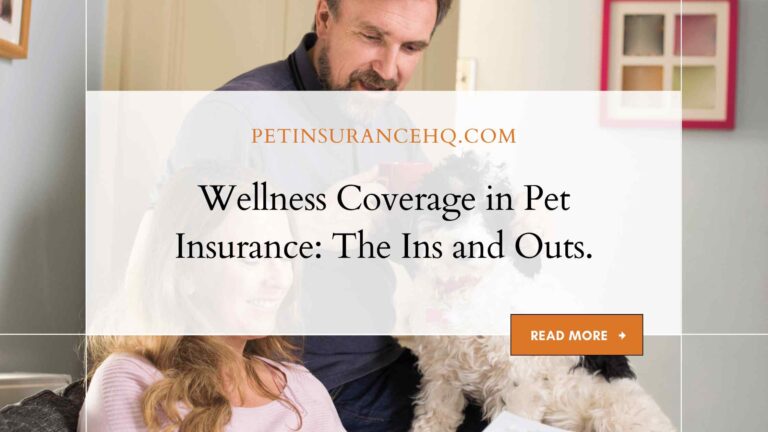Factors to Consider When Choosing a Deductible for Your Pet Insurance Policy
Pets are more than just animals, they’re family members. As pet owners, we want nothing but the best for our furry friends, including proper healthcare. But with the rising costs of veterinary care, pet insurance has become a popular option to ensure that our pets get the medical attention they need without putting a strain on our wallets. When choosing a pet insurance policy, one factor to consider is your deductible – an amount you agree to pay before your insurer kicks in their share of covered expenses.
In this blog post, we’ll take a look at several factors you should consider when setting your deductible and how it can affect your overall coverage and premium rates. So if you’re looking for ways to secure your pet’s health while saving money in the long run, keep reading!
Introduction to Pet Insurance
When it comes to pet insurance, one of the first things you’ll need to decide is what deductible you want for your policy. Your deductible is the amount you’ll have to pay out-of-pocket before your pet insurance policy kicks in.
There are a few factors you’ll want to consider when choosing a deductible for your pet insurance policy, including:

- The type of Coverage you want: There are 2 types of coverage options available with pet insurance – comprehensive and accident only. If you choose comprehensive coverage, your policy will cover both accidents and illnesses. However, this coverage option will typically have a higher monthly premium. If you choose accident only coverage, your policy will only cover accidental injuries. This coverage option usually has a lower monthly premium.
- Your Budget: One of the most important factors to consider when choosing a deductible for your pet insurance policy is your budget. You’ll want to make sure you can afford the monthly premium and the deductible that you choose.
- Your Pet’s Health: If your pet has pre-existing conditions, you’ll need to consider the cost of his or her healthcare when deciding on a deductible. The higher your deductible, the less costly your monthly premium may be, but you’ll have to pay more out-of-pocket for care if your pet becomes ill or has an accident.
Understanding Insurance Deductibles
When it comes to pet insurance, your deductible is the amount of money you are required to pay out-of-pocket before your coverage kicks in. For example, if you have a $500 deductible and your vet bill comes to $600, you will be responsible for paying the first $500 and your pet insurance will cover the remaining $100.
There are a few things to keep in mind when choosing a deductible for your pet insurance policy:
- Your premium will be lower if you choose a higher deductible. This is because you are taking on more of the financial responsibility if your pet becomes ill or injured.
- Make sure you can afford the deductible. If you can’t afford to pay the deductible, then your pet insurance policy won’t do you any good.
- Consider how often you take your pet to the vet. If you take your pet to the vet frequently, then a higher deductible might not be right for you. On the other hand, if you only take your pet to the vet once in awhile, then a higher deductible might save you money in the long run.
- Get quotes from multiple pet insurers before making a decision. Each insurer has different rates and deductibles, so it’s important to shop around and get multiple quotes before deciding on a policy.
In summary, a pet insurance deductible is the amount of money you are required to pay out-of-pocket before your coverage kicks in. Make sure you understand your own financial situation and medical needs for your pet before making a decision on which deductible is right for you. Shop around and get multiple quotes to make sure you get the best deal.
Cost Benefit Analysis: Pros and Cons of Lower vs. Higher Deductible Pet Insurance Plans
When it comes to pet insurance, one of the key factors you’ll need to consider is what deductible to choose for your policy. A deductible is the amount you’ll need to pay out-of-pocket before your pet insurance plan kicks in and covers the remaining eligible costs.
Generally speaking, pet insurance plans with a lower deductible will have higher monthly premiums, while plans with a higher deductible will have lower monthly premiums. So, which is the better option for you? To help you answer that question, let’s take a look at the pros and cons of lower vs. higher deductible pet insurance plans:
Lower Deductible Pet Insurance Plans:
Pros :
- You’ll be covered for more routine/minor care costs.
With a lower deductible plan, you won’t have to pay as much out-of-pocket for routine or minor veterinary care costs like checkups, vaccinations, and teeth cleanings. This can be a major advantage if your pet needs frequent vet care or if you want peace of mind knowing that your pet is fully covered in case of an accident or illness.
- You may be able to get coverage for pre-existing conditions.
Some pet insurance companies will offer coverage for pre-existing conditions on lower deductible plans (although this isn’t always the case). So, if your pet has any existing health issues, a lower deductible plan could be a good way to ensure that your pet is fully protected.
Higher Deductible Pet Insurance Plans:
Pros :
- You’ll pay lower monthly premiums.
The most obvious advantage of a higher deductible plan is that you’ll pay lower monthly premiums. This can be especially beneficial if you’re on a budget and need to save as much money as possible when it comes to taking care of your furry family member.
- You’ll only be paying for major medical costs.
With a higher deductible plan, you won’t have to worry about covering routine or minor vet care costs like checkups, vaccinations, or teeth cleanings (which can add up quickly). Instead, the policy will kick in and cover the cost once you reach the deductible amount – meaning you’ll only be responsible for major medical bills in the event of an accident or illness.
Tips for Choosing the Right Deductible Amount
When it comes to choosing a deductible for your pet insurance policy, there are a few things you need to take into account. Here are some tips to help you choose the right deductible amount for your needs:
- Consider your budget. How much can you afford to pay out-of-pocket in the event of an unexpected veterinary bill? This will help you narrow down your choices.
- Think about how often you take your pet to the vet. If you have a healthy pet, you may be able to get away with a higher deductible than someone who has a pet with chronic health problems.
- Determine what kind of coverage you need. Do you want comprehensive coverage that covers everything from routine checkups to major surgeries? Or do you just need basic coverage for emergencies? This will also help narrow down your choices.
- Compare deductibles and premiums from different pet insurance companies. Get quotes from several companies and compare their offerings side by side before making a decision.
Strategies for Maximizing Benefits of Pet Insurance While Minimizing Costs
There are a few things you can do to make sure you are getting the most out of your pet insurance while minimizing costs.
First, research different policies and companies to find the best coverage for your needs. Make sure to read the fine print and compare deductibles, co-pays, and annual limits.
Second, consider a policy with no deductible or a lower deductible. This will minimize your out-of-pocket costs if your pet needs treatment.
Third, get preventive care for your pet. Many pet insurance policies cover routine check-ups and vaccinations, so taking advantage of these benefits can help keep your costs down in the long run.
Be sure to stay up to date on your pet’s shots and health records. This will help the claims process go smoother in the event that your pet does need treatment.
Conclusion
As you can see, there are a lot of factors to consider when choosing a deductible for your pet insurance policy. You’ll want to weigh all the different options and decide which one makes the most sense for both your budget and your pet’s needs. It’s also important to remember that deductibles may be subject to change from year-to-year depending on the particular insurance provider, so make sure to shop around if you find yourself in need of a better deal. With these tips in mind, we hope you’re now equipped with everything you need to make an informed decision about what amount is right for your situation!







